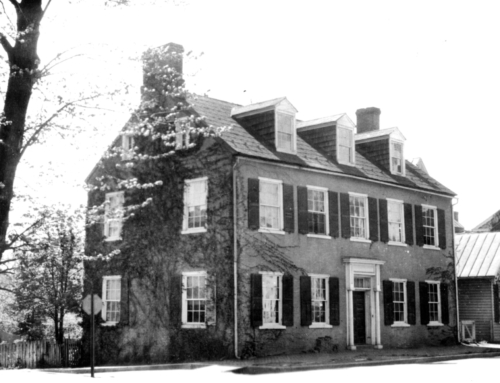| Ray ‘Deerfoot’ Spencer” Carroll County Times article for 13 September 1998 By Jay A. Graybeal When the Dayton, Ohio Vets baseball team boarded the train at Peoria, Illinois, bound for Ft. Wayne, Indiana, on August 23, 1917, no one knew that tragedy lay ahead. A fast freight collided with the passenger train at Mansfield, Illinois and nine of the ballplayers were injured, including Ray Spencer of Westminster. The story of the train wreck, as related by manager Johnny Nee, appeared in the August 25th issue of the Dayton Journal: |
| “EXTRA HAND LUCKY
Most of us fellows were playing cards in the stateroom of the sleeper, which was at the front end of the car, before the accident occurred. As it was getting close to midnight, a decision was reached to play one more hand before ‘lights out.’
That extra hand was the luckiest ever dealt to any of the boys in the game. Here’s why. Had we not played it, all of us would have been in our berths at the back end of the car when the freight engine piled into our Pullman, and there is not telling how many fatalities would have resulted.
The reason that Spencer, Schettler and Donohue were so badly injured, was because they retired a few minutes before and were caught in the mass of wreckage when the collision reduced the rear end of the sleeper to kindling wood.”
Initially, Spencer’s injuries were not thought to be life threatening, however, he died on September 13th. To borrow a headline from a newspaper of the time, only Spencer was “called out” by the Great Umpire. An article about his death was published in the September 14th issue of the Dayton Daily News newspaper:
“League Loses Best Hitter And Most Popular Player In Death of Ray Spencer
Sluggers there have been, many of them, in the history of the Central League, but the circuit never knew a more consistent foe of pitchers than Raymond—”Deerfoot” Spencer, who died at Champaign, Ill., Thursday evening. He was a natural hitter. Smart pitchers used to outguess him now and then because he had but one style at the plate, but all the speed and curves in baseball never feased him. Coming here in 1910 and returning in 1914, after two years’ absence, Ray Spencer wound up his Central league career with a grand battling average of .315 for six seasons. There was not a pitcher in the history of the league who could fool Spencer with any regularity and unlike most left-handed batsmen he would just as soon swing against southpaw hurling as the right-handed brand. No flinger ever took a chance with him in a pinch if there was any way to avoid doing so, and many times the fans at Fairview, Highland and Wright parks used to shout their disapproval when the opposing pitcher deliberately walked “Deerfoot” when there were runners on bases and two out. It has been said of Spencer that he could hit a ball harder than any player the league ever knew, and many of his singles had more power back of them than the homers and triples of other athletes who sent the ball high in the air. Spencer’s long suit was driving liners just over the infield or right through the inner works and they traveled with such speed the outfielders often held them to singles. On the other hand when Spencer caught hold of a low ball there was no telling how far the pill would travel and extra base clouts were almost a daily feature of his batting. Many times he has shown the fans choice collections of doubles, triples and homers in one game, but the most terrific hitting the writer ever saw him produce was in a game at Highland several years ago when he secured five singles in as many times at bat. It seemed as if each ball was hit harder than the previous one, yet they were all held to singles because they reached the outfielders so quickly.
Because of his slow movements on the bases there were many who didn’t regard Spencer so highly a sun outfielder, when as matter of fact, he was one of the best in the league. Ray traveled a good deal faster in the gardens than he did on the sacks and he was a remarkable judge of a fly ball. He was off with the crack of the bat and he had a habit of just reaching the pill when it looked as if the ball had evaded him. When Arista DeHaven left the Dayton team and Spencer was placed in the sunfield there were many who though he would be bothered by Old Sol and that his batting would likewise suffer but neither proved to be the case. He could grab balls out the sun as well as any player who ever performed in this city and he kept on hitting the old ball year after year. His nickname of “Deerfoot” was given him when he first joined the Vets, his fellow players jokingly referring to him in this manner because he was anything but a deer on the bases. In fact this slowness of foot on the paths is all that kept him in the minor leagues and if he had been able to travel to first like a lot of other players he would have made many more hits each season. When Spencer got a base-knock it was a legitimate one.” |
| Following his death, exactly eighty-three years ago today, Spencer’s body was sent home for burial. His funeral was delayed when the train carrying his coffin derailed near Pittsburgh, however, he was finally laid to rest in the Westminster Cemetery. His tombstone bears an carved baseball bat and ball, symbols of the game he loved and played so well. |
| Photo caption: | The tombstone of George Raymond “Ray” Spencer in the Westminster Cemetery marks the grave of one of the greatest baseball players born in Carroll County. Spencer was fatally injured in a 1917 train wreck |





